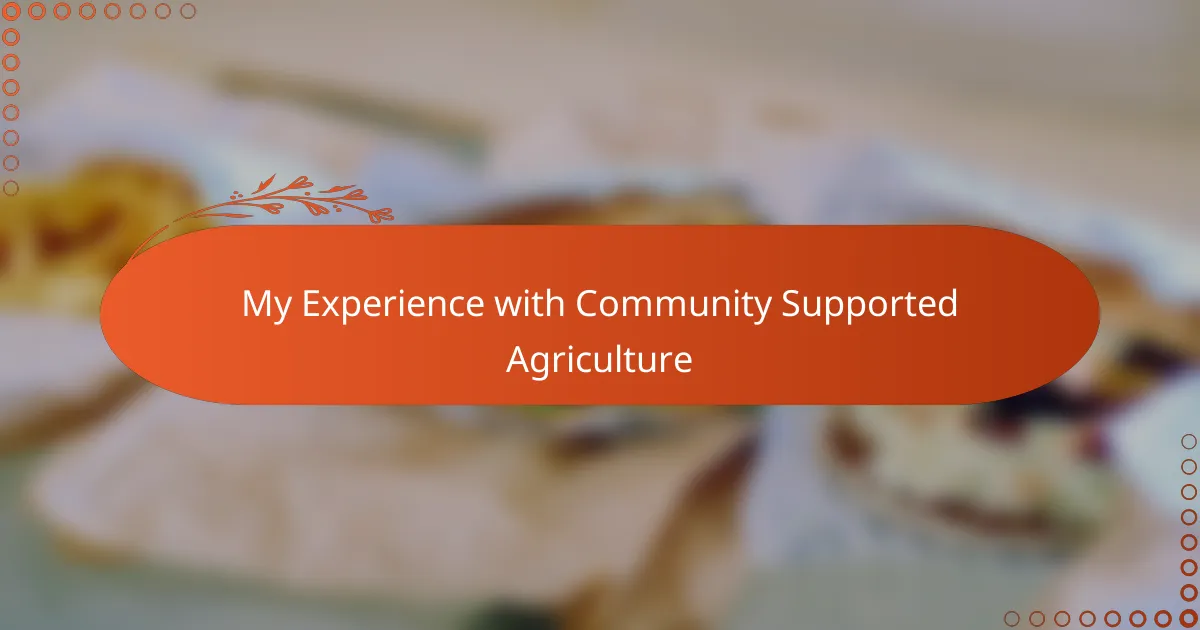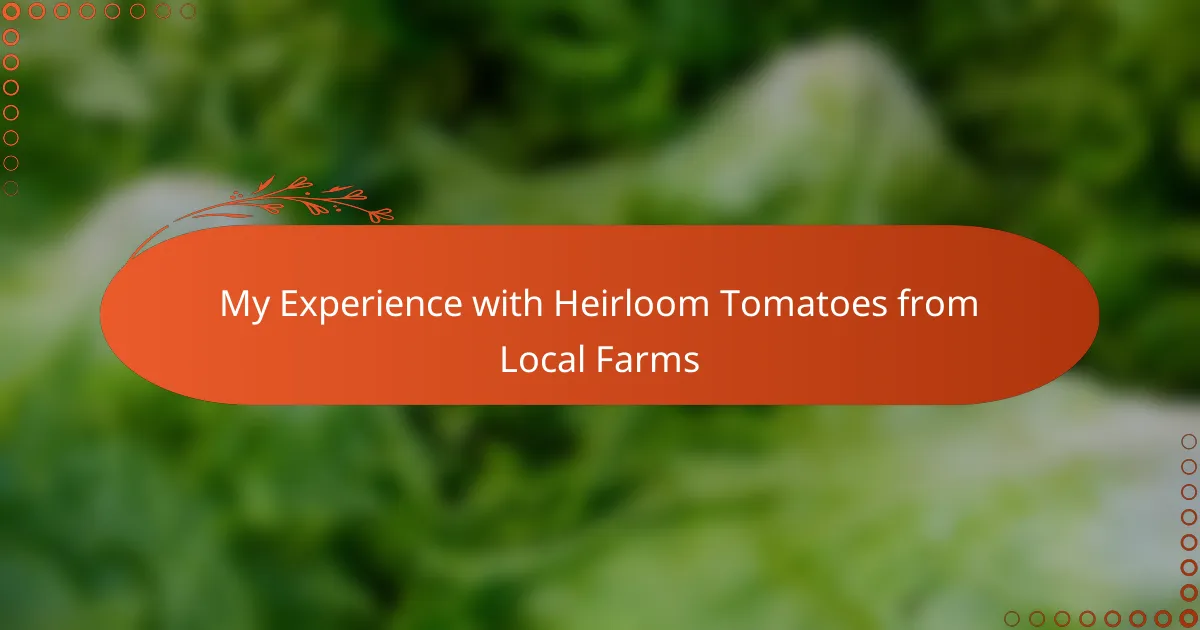Key takeaways
- Community Supported Agriculture (CSA) creates a strong connection between farmers and consumers, promoting trust and transparency in food sourcing.
- Joining a CSA offers fresh produce, encourages cooking with seasonal ingredients, and supports local agriculture, enhancing community well-being.
- Effective meal planning and proper storage techniques can maximize the use of CSA produce, reducing waste and ensuring freshness.
- Sharing surplus produce with friends and neighbors fosters community connections and enhances the joy of eating locally.
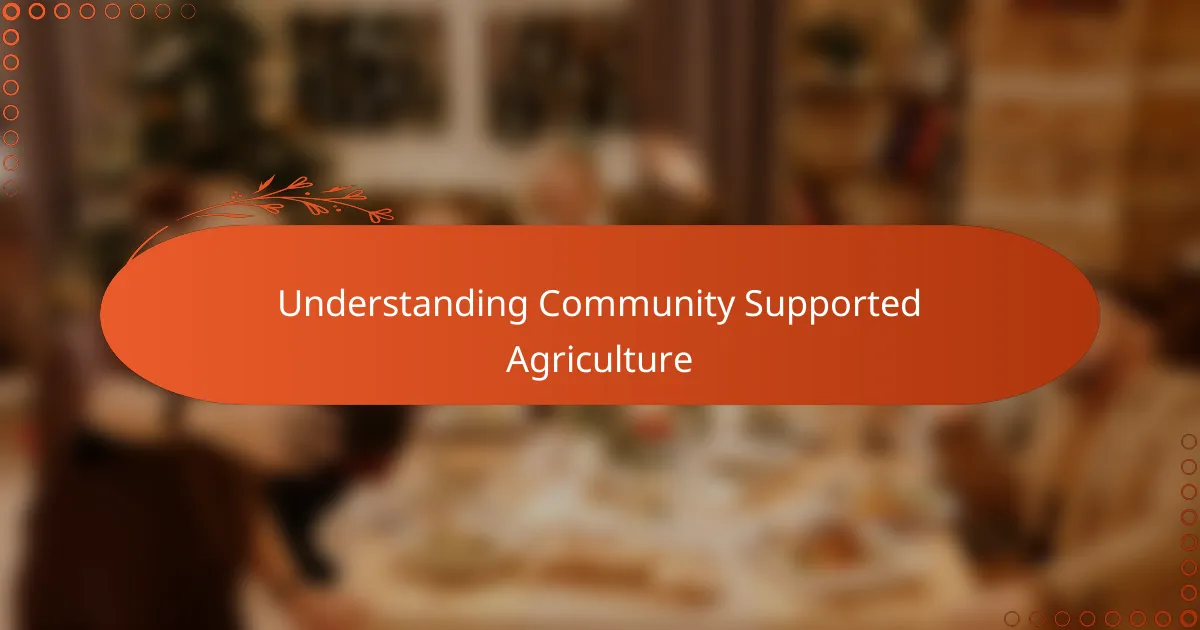
Understanding Community Supported Agriculture
Community Supported Agriculture, or CSA, is more than just a way to get fresh produce—it’s a shared commitment between farmers and community members. When I first joined a CSA, I was struck by the sense of trust it created; I was literally supporting the farmer’s whole season, come rain or shine. Have you ever wondered how it feels to know exactly where your food comes from, and who worked hard to grow it?
What fascinates me about CSA is how it reconnects us to the cycles of nature. Each week, the variety in my box was a surprise, sometimes challenging me to get creative in the kitchen. This unpredictability became part of the charm and a reminder to appreciate what the land offers at that moment.
CSA also fosters a unique sense of belonging. Beyond just food, it’s about community stories, farm visits, and learning the rhythms of local agriculture. Have you experienced that warm feeling when you realize you’re part of something bigger than just your own dinner plate? That’s what CSA brought to my homesteading journey.
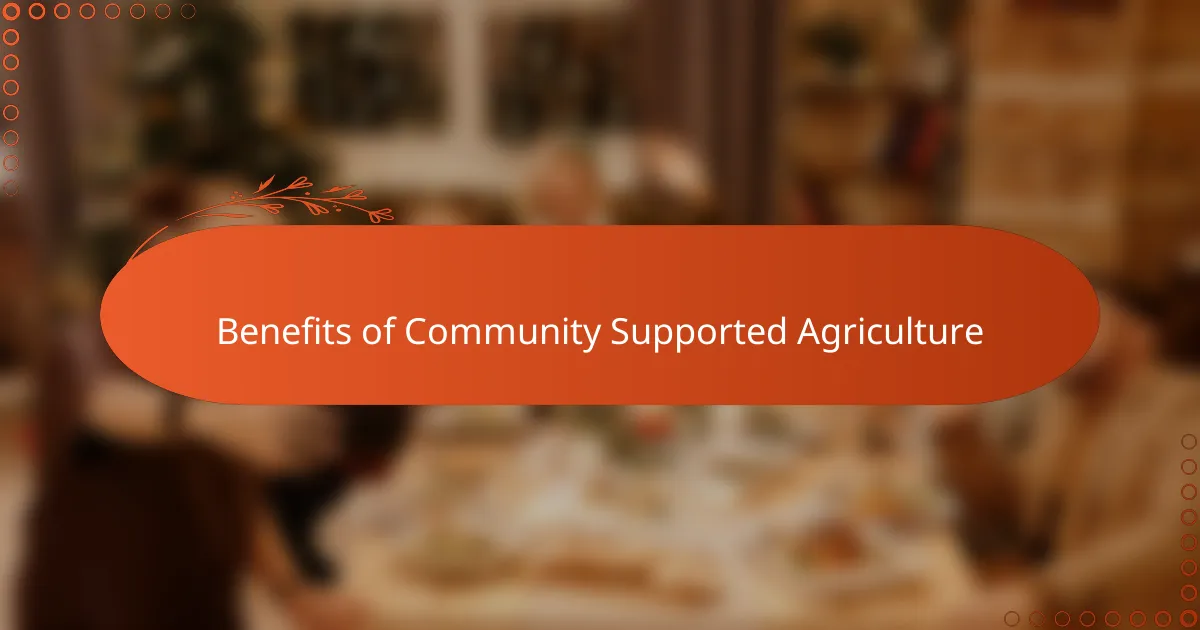
Benefits of Community Supported Agriculture
One of the biggest benefits I found in joining a CSA was the freshness of the produce. There’s a distinct difference when vegetables come straight from the farm to your kitchen, often harvested just hours before. Have you ever tasted tomatoes so vibrant, you couldn’t imagine going back to store-bought?
Beyond taste, supporting a CSA gave me peace of mind about food safety and quality. Knowing the farmer personally, and trusting their sustainable practices, made eating healthier feel natural and straightforward. Don’t you want to feel confident that what you serve your family is grown with care, not shortcuts?
Lastly, CSA membership deepened my connection with the seasons and local environment. Each week’s delivery encouraged me to try new recipes and reduce food waste by embracing what was available. Have you noticed how shifting our menus with the seasons can make cooking feel fresh and exciting again? For me, this was one of the most rewarding aspects.

Choosing the Right CSA Program
Choosing the right CSA program felt a bit overwhelming at first, with so many options promising freshness and quality. What really helped me was focusing on farms that shared their growing practices openly—transparency mattered a lot to me. How can you trust your food source if the farmer isn’t willing to invite you behind the scenes?
I also learned that not all CSAs are created equal when it comes to variety and flexibility. Some programs let you customize your box, which was a game changer for my family’s tastes and dietary needs. Have you thought about whether you want a surprise box full of seasonal surprises or the ability to pick what lands on your table each week?
Finally, I discovered that location is crucial—not just for convenience, but because supporting nearby farms ensures the produce is truly fresh and reduces environmental impact. Joining a CSA close to home felt like investing in my community’s wellbeing as much as my own. Have you noticed how knowing your food’s exact journey makes each meal feel more meaningful?

Cooking with CSA Ingredients
Cooking with CSA ingredients has been a delightful adventure for me. Since the produce changes each week, I found myself experimenting with recipes that I might never have considered otherwise. For example, when I received a bunch of rainbow chard I wasn’t familiar with, I quickly learned it makes a fantastic addition to pasta dishes—adding color and a subtle earthiness that brightened up the plate.
Sometimes, the abundance of a particular vegetable challenged me to think creatively and reduce waste. When I got an unexpected surplus of zucchini, I turned to making zucchini fritters and even spiralized some for a fresh, veggie-forward salad. Have you ever found yourself inventing dishes simply because your CSA box inspired you? That’s the magic of cooking seasonally and locally.
I also appreciate how CSA ingredients invite simplicity and highlight natural flavors. With produce this fresh, there’s no need for complicated seasoning; a little olive oil, salt, and pepper often do the trick. Cooking this way has made me more mindful of letting the food speak for itself. Have you noticed how food “from the earth” can taste so vibrant, it barely needs embellishment? That’s been one of my favorite lessons in the kitchen.

Favorite Homesteading Recipes Using CSA
One of my absolute favorite homesteading recipes using CSA produce is a simple roasted vegetable medley. When the box overflows with carrots, beets, and onions, roasting them brings out their natural sweetness in a way that feels deeply satisfying. Have you ever noticed how just a sprinkle of fresh herbs from your garden can transform humble veggies into a memorable meal?
I also lean heavily on hearty soups during cooler months, especially when CSA shares include potatoes, kale, and leeks. There’s something comforting about blending these fresh, seasonal ingredients into a warm bowl that nourishes both body and spirit. It’s a reminder that simple, wholesome food often carries the richest flavors and memories.
And then there’s the thrill of baking with CSA greens—like making spinach and herb quiche when the spring boxes come packed with generous bunches of leafy greens. I find this recipe not only celebrates the freshness of the harvest but also creates a centerpiece for family meals that everyone eagerly anticipates. Have you ever felt that pride in serving something grown so close to home? That’s the joy CSA brings to my table.
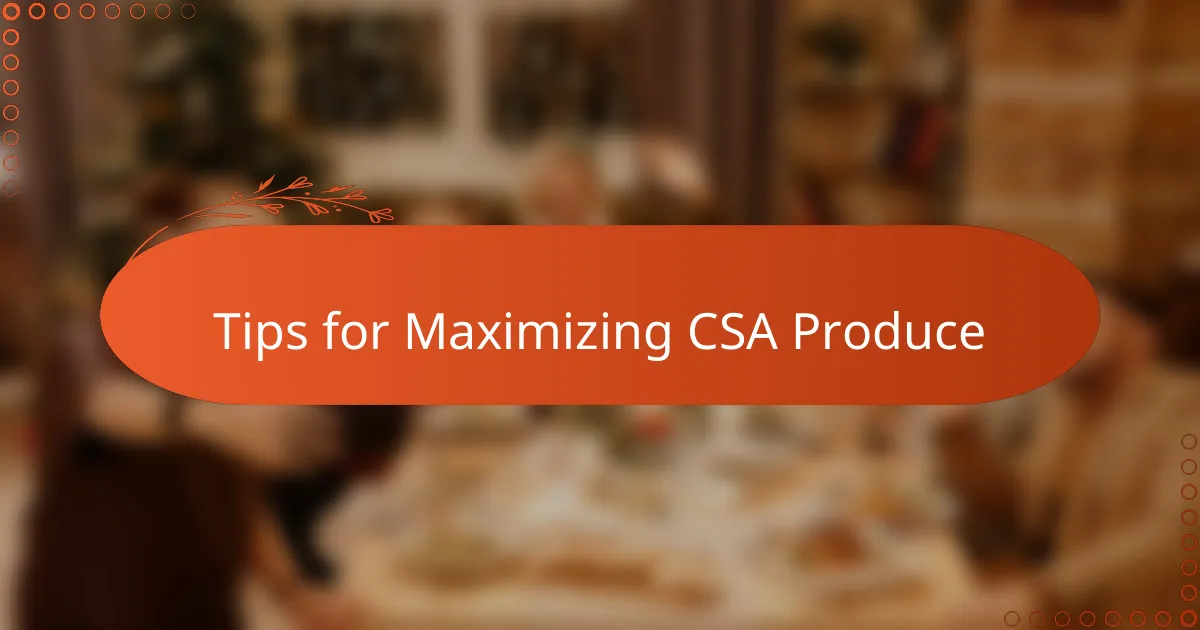
Tips for Maximizing CSA Produce
One thing I quickly realized was the importance of planning meals around the produce I received each week. When I took time to inventory my CSA box as soon as it arrived, I could map out recipes that used those veggies before they lost their crispness. Have you ever opened your box only to find something unfamiliar and wondered what to do with it? Embracing that challenge turned meal planning into a fun puzzle for me.
I also learned that proper storage makes all the difference in extending the life of CSA produce. For instance, washing delicate greens only just before eating them kept them fresh far longer than if I cleaned them right away. Do you store your vegetables in the fridge crisper, or do you have a secret method that keeps them vibrant? For me, a few simple tricks prevented waste and saved money.
Lastly, I found that sharing extras with friends and neighbors helped me appreciate the abundance rather than feel overwhelmed by it. When I had an unexpected surplus of fresh herbs or squash, gifting a bundle sparked conversations and even recipe exchanges. Have you tried turning your CSA bounty into community connections? It’s a rewarding way to multiply the joy of eating local and fresh.
